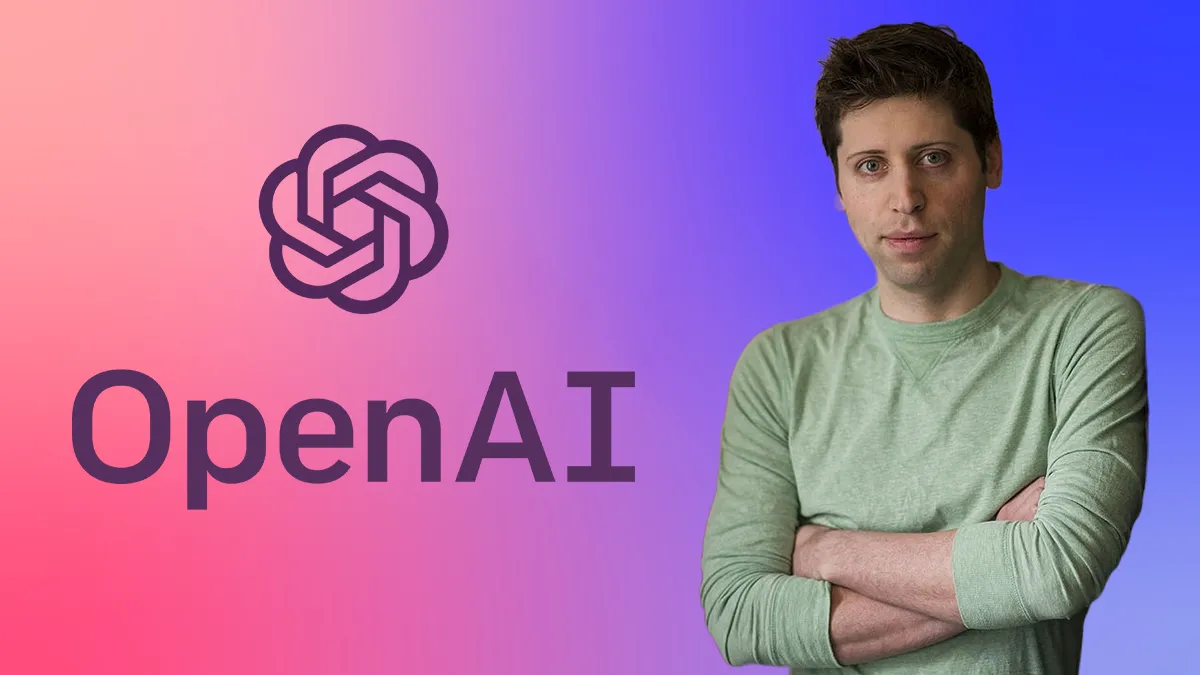The Diverging Paths Of Altman And Nadella: Implications For The Future Of AI

Table of Contents
Sam Altman and Satya Nadella, CEOs of OpenAI and Microsoft respectively, represent two distinct approaches to artificial intelligence. While both companies are heavily invested in AI's development, their strategies, ethical considerations, and long-term visions diverge significantly. This article explores these diverging paths and their implications for the future of artificial intelligence, examining the potential impact on various sectors and the broader societal landscape. The "Altman vs Nadella AI" debate is crucial for understanding the future of this transformative technology.
Altman's OpenAI: A Focus on Rapid Innovation and General Purpose AI
The OpenAI Approach: Bold, Risky, and Focused on AGI
OpenAI, under Sam Altman's leadership, champions a bold and ambitious vision: the creation of Artificial General Intelligence (AGI). This pursuit of AGI—a system with human-level intelligence—is central to their strategy. They prioritize pushing the boundaries of AI capabilities, even if it means navigating significant risks. This commitment manifests in:
- Focus on AGI: OpenAI's research actively seeks to create AI that can learn and adapt across diverse tasks, unlike today's narrow AI.
- High-Risk, High-Reward Approach: Their willingness to explore cutting-edge techniques, even those with uncertain outcomes, fuels rapid innovation.
- Open-Source Initiatives (with caveats): While known for proprietary models like GPT, OpenAI also engages in open-source collaborations, fostering wider AI development and research.
- Examples: GPT-3, GPT-4, DALL-E 2, and advancements in reinforcement learning exemplify their commitment to pushing technological boundaries.
Ethical Concerns and the Need for Responsible AI Development
OpenAI's aggressive pursuit of AGI inevitably raises ethical concerns. The potential dangers of uncontrolled AI advancement are a significant debate. Balancing innovation with safety and ethical considerations is paramount. This includes:
- AGI Safety Research: A critical component of OpenAI's work involves researching and mitigating the potential risks associated with AGI.
- Bias Mitigation: Addressing biases present in training data and ensuring fairness in AI outputs is a continuous challenge.
- Misuse Prevention: OpenAI grapples with the potential for their technologies to be misused for malicious purposes.
- Job Displacement Concerns: The potential for widespread job displacement due to automation driven by advanced AI is a significant societal concern.
Nadella's Microsoft: A Gradual Integration of AI into Existing Products and Services
Microsoft's Strategy: Strategic Integration and Incremental Advancement
Satya Nadella's Microsoft adopts a more measured approach, focusing on strategically integrating AI into its existing products and services. This incremental approach prioritizes responsible AI development and ethical considerations. Key aspects include:
- Ecosystem Integration: Microsoft leverages its vast ecosystem—including Azure, Office 365, Windows, and Bing—to seamlessly incorporate AI capabilities.
- Responsible AI: Microsoft emphasizes ethical AI development, prioritizing fairness, transparency, and accountability in its AI systems.
- Partnerships and Collaborations: They collaborate with various organizations and industries to expand AI applications across diverse sectors.
- Examples: Microsoft Copilot, Azure AI services, and various responsible AI initiatives demonstrate this strategic integration.
The Power of Ecosystem and Gradual Market Penetration
Microsoft's strength lies in its massive ecosystem. This allows for a gradual rollout of AI features, minimizing risks and maximizing market penetration. Their focus is on:
- Business Applications: Microsoft primarily targets business applications and enterprise solutions with its AI integrations.
- Gradual Rollout and Testing: New AI features are introduced incrementally, allowing for thorough testing and feedback before widespread deployment.
- Industry-Specific Solutions: Microsoft develops tailored AI solutions for specific industries, addressing unique needs and challenges.
- Examples: AI-powered productivity tools within Microsoft 365, cloud-based AI services on Azure, and custom AI solutions for healthcare, finance, and other sectors.
The Implications of Diverging Approaches: A Comparative Analysis
Market Dominance and Technological Leadership
The "Altman vs Nadella AI" competition shapes the future of AI market dominance. Both OpenAI and Microsoft are vying for technological leadership, but their approaches differ significantly:
- OpenAI: Focuses on breakthroughs and AGI, potentially leading to disruptive technologies but with higher risk.
- Microsoft: Emphasizes integration and market penetration, offering a more stable and predictable path to growth.
- Potential Outcomes: A duopoly might emerge, or other significant players could gain traction, changing the landscape of the "Altman vs Nadella AI" dynamic.
Societal Impact and Regulatory Landscape
The societal impact of these diverging approaches is substantial, influencing:
- Job Market: Both approaches could lead to job displacement, but the pace and nature of this impact differ.
- Economic Growth: AI's contribution to economic growth will vary depending on which approach dominates.
- Ethical Concerns: Addressing bias, misuse, and accountability remains a crucial challenge, requiring proactive regulatory frameworks.
- Government Regulation: The regulatory landscape will significantly shape the future trajectory of both OpenAI's and Microsoft's AI endeavors.
Conclusion:
The diverging paths of Sam Altman and Satya Nadella highlight the complex and multifaceted nature of the AI revolution. Altman's focus on rapid innovation and AGI presents both immense opportunities and significant risks, while Nadella's more measured approach emphasizes integration and responsible development. Understanding these diverging strategies is crucial for navigating the future of AI and preparing for its profound societal impact. The ongoing competition between Altman and Nadella – and their respective approaches to Altman vs Nadella AI – will significantly shape the future of artificial intelligence, demanding careful consideration of ethical implications and proactive regulatory frameworks. Further research and discussion on Altman vs Nadella AI strategies are essential for responsible AI development.

Featured Posts
-
 Poilievres Defeat Conservative Leader Loses Own Seat Cbc Reports
Apr 30, 2025
Poilievres Defeat Conservative Leader Loses Own Seat Cbc Reports
Apr 30, 2025 -
 Eurovision In Manchester Dates Venue And Everything You Need To Know
Apr 30, 2025
Eurovision In Manchester Dates Venue And Everything You Need To Know
Apr 30, 2025 -
 Eurovision 2025 Semi Final Running Orders Announced
Apr 30, 2025
Eurovision 2025 Semi Final Running Orders Announced
Apr 30, 2025 -
 How To Watch Cavaliers Vs Heat Game 2 Time Tv Channel And Free Live Stream Options
Apr 30, 2025
How To Watch Cavaliers Vs Heat Game 2 Time Tv Channel And Free Live Stream Options
Apr 30, 2025 -
 Zoe Kravitz And Noah Centineo Dating Rumors Explained
Apr 30, 2025
Zoe Kravitz And Noah Centineo Dating Rumors Explained
Apr 30, 2025
